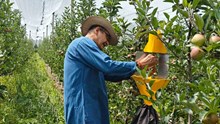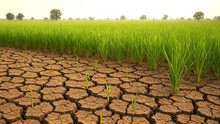
Global deforestation has slowed across all regions over the past decade, according to the United Nations Food and Agriculture Organization’s Global Forest Resources Assessment 2025 (FRA 2025), released during the Global Forest Observations Initiative (GFOI) Plenary in Bali, Indonesia.
The report, published every five years, shows encouraging progress in forest conservation but warns that the rate of deforestation remains dangerously high, threatening biodiversity, climate stability, and livelihoods.
The FAO report finds that forests now cover 4.14 billion hectares, accounting for roughly one-third of the planet’s land area. While the overall net forest loss has steadily declined, from 10.7 million hectares annually in the 1990s to 4.12 million hectares between 2015 and 2025, deforestation continues at a worrying pace of 10.9 million hectares each year. The majority of these forests are in tropical regions, where pressures from agriculture, logging, and land-use change remain intense.
There are, however, signs of progress. More than half of the world’s forests (2.13 billion hectares) are now under formal management plans, an increase of 365 million hectares since 1990, while 20 percent of global forests (813 million hectares) are now within legally protected areas, reflecting governments’ growing focus on sustainable forest governance.
India has also emerged as a bright spot in global forest conservation, climbing to the 9th position worldwide in total forest area, up from 10th in the previous assessment, according to the FRA 2025. The country has also retained its 3rd position globally in annual forest area gain, underscoring its progress in afforestation and sustainable management under various national initiatives.
Naturally regenerating forests continue to make up 92 percent of the total forest area, though they have declined by 324 million hectares since 1990. The rate of loss has slowed substantially, with Africa and South America showing the steepest declines and Europe reporting modest gains. Primary forests, which remain the most ecologically valuable, now span 1.18 billion hectares, about one-third of the total forest area, but continue to shrink at roughly half the rate recorded in the early 2000s.
Planted forests, covering 312 million hectares, now represent 8 percent of total forest cover and have expanded in every region, albeit at a slower pace in recent years. The world’s total forest carbon stock is estimated at 714 gigatonnes, reflecting forests’ critical role in storing carbon and combating climate change.
Despite these improvements, global forest ecosystems remain under threat. Each year, fires affect around 261 million hectares of land, nearly half of which are forests. In 2020 alone, insects, diseases, and extreme weather events damaged about 41 million hectares, mainly in temperate and boreal regions.
FAO Director-General Qu Dongyu described the FRA as the most comprehensive global evaluation of forest resources, essential for shaping policies and investments that support sustainable forest management.
The 2025 assessment, which covers 236 countries and areas, draws on data from 197 national correspondents and more than 700 experts, offering the clearest picture yet of the planet’s forests, and the urgent need to protect them.
















